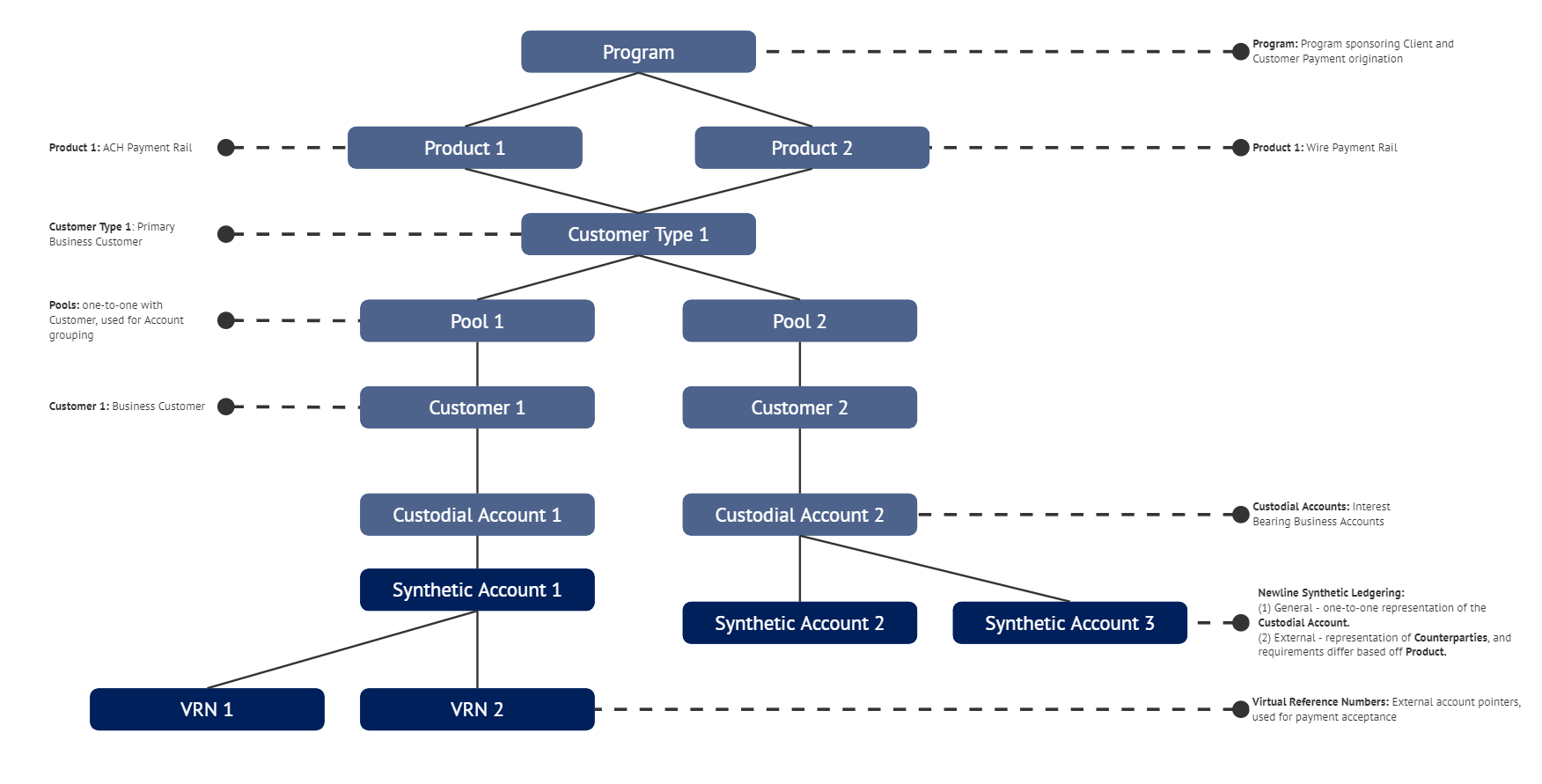Overview
Newline Onboarding 101
Onboarding to any SaaS product can be a daunting task, and at Newline we seek to make this experience as smooth as possible. Part of that is getting you, our Client, familiar with the process by which we establish key resources like your Program, Products, Customers, Custodial Accounts, and Synthetic Accounts.
The following guide details, in short order, the Program and resources that Newline will configure for you and how each of these components affect your ability to use our API Reference.

The above visualization shows the Program and resources Newline will provide and maintain for Clients going through onboarding and implementation, but we'll enumerate the details for each resource above.
NoteIn the above visualization, the lighter color items are preset and created by Newline for any Client implementation. Synthetic Accounts is a special case where general Synthetic Accounts are preset and Clients will be responsible for creating their own external Synthetic Accounts and VRNs.
- Program - the Program dictates the origination terms to which the Client and Newline mutually agree. This could include payment limitations like amounts, frequency, and the need for pre-funding (ex. ACH). Your Program will be created and configured by Newline.
- Products - these are distinct Product offerings supported by Newline. For instance, this can include payment rails like ACH, Wire, and Instant Payments that are configured as available synthetic_account_types. Newline creates and configures a Program's Products.
- Products can be applied across multiple Customers, and Customers can be attached to multiple Products. Essentially there is a many-to-many relationship between these resources, which make them, in some cases, parallel.
- A Product can support multiple payment rails.
- Customer Type - Customers are provided a Customer Type at creation. For instance, Primary Customers are considered full account owners and have complete authority to take any actions associated with their accounts and associated resources. You can also limit certain Customer Types to have access to only certain Products. Permitted Customer Types are configured by Newline.
- Pool - Container for one or more Synthetic Accounts, with Assets owned by one or more Customers. Pools allow for shared assets and flexibility in ownership and transfer of assets. Newline will create Pools.
- Customer - This is the entity that owns the Account and Funds stored at Newline. This entity also is deemed the Originator when it comes to any payment creation. Clients can also be Customers in the event they meet those criteria. Customers are created by Newline or by the Client depending on the use case.
- Custodial Account - This is the Account that exists in our Synthetic Core and represents the reciprocal Account on Fifth Third's ledger. These are the accounts you can access via Fifth Third Direct. Custodial Accounts will be created by Newline.
- Synthetic Account - How Newline represents the assets held by your Customers. These are the accounts that Customers view and interact with on your application. Synthetic Accounts are also used to manage external accounts that your Customers will likely use within your application. Synthetic Accounts of the general category will be created by Newline or by the Client depending on your use case. Clients will create external Synthetic Accounts like wire_external, ach_external, and instant_payments_external.
- Virtual Reference Number - Virtual Reference Numbers (or VRNs) are virtualized account numbers. They are aliases to a synthetic account and can form a many-to-one relationship with their parent synthetic account.
Updated 29 days ago
